
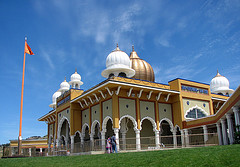 Two articles over the weekend got me thinking. I’ll get to them soon enough. Be patient!
Two articles over the weekend got me thinking. I’ll get to them soon enough. Be patient!
The issues aren’t new. I remember back to the late 1990s, when the community here in the Bay Area was moving to build the new San Jose Gurdwara. The Evergreen community protested and raised the typical objections – traffic, architecture that doesn’t ‘fit’ into the community, and sometimes the ‘undesirable neighbors’ argument.
Wherever Sikhs try to build something, these three arguments follow. The latest case…..Southall?
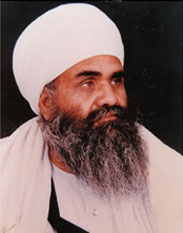 Earlier this week in B.C., hundreds of Sikhs protested the arrival of Mann Singh Pehowa, a granthi accused of rape, misconduct, and blasphemy.
Earlier this week in B.C., hundreds of Sikhs protested the arrival of Mann Singh Pehowa, a granthi accused of rape, misconduct, and blasphemy.
There is, of course, an underlying issue here regarding whether or not Pehowa supports his own dera, has encouraged blasphemy, etc. There is pretty widespread criticism of him, as an individual, as well as of his behavior. I do not want to use this opportunity to get into the nitty gritty of deras and blasphemy, but rather, to focus on the issue of religion and exploitation.
Earlier in the year, Sundari discussed sexual assault in the context of a larger community-level failure to ensure gender equity. Sexual abuse is not new to faith communities, but it evokes jarring feelings of betrayal, condemnation, and deep psychological trauma, both among those who are abused and among their loved ones.
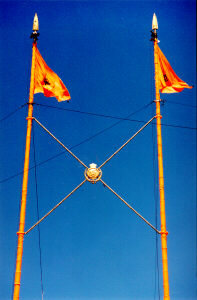 Play along with me here…imagine this Sunday you walk in to your local Gurdwara – remove your shoes, wash your hands, and as you make your way to the main darbar hall, you read the notices on the wall – “Education Committee holding Kirtan Classes Wednesday Night @ 6pm.” Next to that, another sign “Cultural Committee hosts Punjabi night next Saturday!” Further along, you see “Public Affairs Committee presents Interfaith Meeting on Friday.” Then right before you enter the darbar hall, you see…
Play along with me here…imagine this Sunday you walk in to your local Gurdwara – remove your shoes, wash your hands, and as you make your way to the main darbar hall, you read the notices on the wall – “Education Committee holding Kirtan Classes Wednesday Night @ 6pm.” Next to that, another sign “Cultural Committee hosts Punjabi night next Saturday!” Further along, you see “Public Affairs Committee presents Interfaith Meeting on Friday.” Then right before you enter the darbar hall, you see…
Human Rights Committee holding urgent action letter-writing workshop for two Indonesian prisoners of conscience, Sunday after Langar – and don’t forget the “Justice for Darfur” rally this Saturday morning, bus leaves at 8am Sharp!
Whoa! What kind of radical Gurdwara is this? What are the youth up to now? Is this one of those extremist Gurdwaras?
Or…is it the kind of Gurdwara Guru Sahib had intended?
Guru Nanak’s mission was based on the fundamental principle of human rights. We see this not only through his Baani, but throughout significant historical events – whether it was speaking out against the caste system and refusing to the wear the janeoo or his challenge of the tyrannical ruler Babar. Even in his ninth form, Guru Tegh Bahadur gave his life speaking out for a people whose practices he disagreed with, but supported their right to practice religion freely. He gave his life for the freedom of choice and the freedom of religion. There are several amazing stories of the Guru’s activism in the area of human rights and social justice…but strangely, this subject in the context of current events has now become taboo.
Continue Reading »
I wanted to take the time to highlight two issues (Part 2 to be posted soon) which have plagued the Punjabi Sikh community for many, many years. I know that discussing these issues over and over again is overwhelmingly tedious for the majority of people. Quite frankly, I agree. However, if I didn’t believe that having these important discussions and bringing awareness to these issues over (and over, and over) again added some value to potential solutions – then I wouldn’t waste the space. Needless to say, these issues don’t seem to be going away which means these conversations are that much more important to have.
A recent article in the NYTimes expresses surprise at the fact that female feticide is occurring within immigrant communities residing in the United States. The thought seems to be that preference of male children should ideally disappear with assimilation into western societies. (For those of us hanging out in The Langar Hall, we know this isn’t always the case in the Punjabi community). The article uses US Census Data to provide quantitative evidence that there exists a bias for male children in certain Asian American communities.
Demographers say the statistical deviation among Asian-American families is significant, and they believe it reflects not only a preference for male children, but a growing tendency for these families to embrace sex-selection techniques, like in vitro fertilization and sperm sorting, or abortion.
New immigrants typically transplant some of their customs and culture to the United States – from tastes in food and child-rearing practices to their emphasis on education and the elevated social and economic status of males. [emphasis added]
This latter point is especially significant. Is the problem of sex-selective abortions purely cultural and is that why it continues to be an “acceptable” problem?
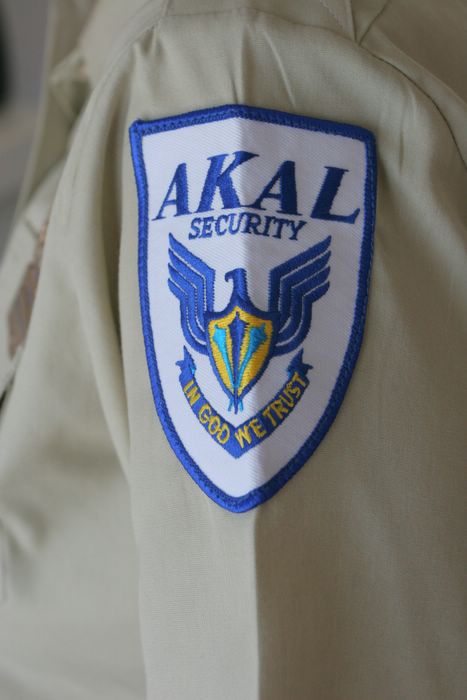 Just before the weekend, NPR featured a story on Akal Securities and the Sikh community in New Mexico. The article discusses the success of a number of businesses that help support the 3HO organization. It is partly due to these generous contributions by community members and leaders of these businesses that as a community we benefit from the inspiring resources such as Sikhnet.com. As an attendee at the annual Los Angeles Vaisakhi Nagar Kirtan, I have witnessed the beautiful display of the Sikh community, largely led by members of the 3HO, year after year.
Just before the weekend, NPR featured a story on Akal Securities and the Sikh community in New Mexico. The article discusses the success of a number of businesses that help support the 3HO organization. It is partly due to these generous contributions by community members and leaders of these businesses that as a community we benefit from the inspiring resources such as Sikhnet.com. As an attendee at the annual Los Angeles Vaisakhi Nagar Kirtan, I have witnessed the beautiful display of the Sikh community, largely led by members of the 3HO, year after year.
For those familiar with Akal Securities, you can find their ubiquitous khanda symbol everywhere. From airports, to security guards in front of Target, I have had a sense of pride whenever I see their logo. It is a tremendous example of our Sikh brethren being successful and specifically an example of individuals that use their success to contribute to the Sikh community in general. This is not to say that the company has not had its share of problems (and successes), but still I believe it is a model and a successful one and deserves recognition.
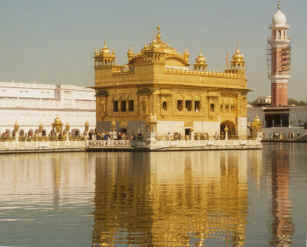 For some Sikhs in Punjab, apparently two Harmandar Sahibs. Or at least that’s the argument between the SGPC and a group of Sikhs. The SGPC argues that a group of Sikhs are building a replica of Harmandar Sahib, and that they stridently oppose any “imitation” gurdwaras (my phrase, not theirs).
For some Sikhs in Punjab, apparently two Harmandar Sahibs. Or at least that’s the argument between the SGPC and a group of Sikhs. The SGPC argues that a group of Sikhs are building a replica of Harmandar Sahib, and that they stridently oppose any “imitation” gurdwaras (my phrase, not theirs).
The Sikhs, who are definitely building a gurdwara (but whether or not it is intended to be a replica is contested), argue that the SGPC is trying to stir up trouble and adopting wedge politics tactics to scramble for power.
At first I read this story and thought to myself, “Wow, that is wacky.” But the longer I’ve reflected on it, the more I have to ask — REALLY???
Ravi Singh Bhalla was elected to the City Council in Hoboken, New Jersey this past week! A city that is less than 1% Asian and predominately white, Hobokens elected Bhalla with 5,810 votes. Bhalla had the highest number of votes amongst the 6 candidates competing for the 3 council seats.
In an e-mail out to supporters, Ravi’s brother, Amardeep Singh, described the bigotry they received during this campaign. He writes:
“… elections are not always for the faint of heart … we were cursed at constantly, literature was ripped out of our hands and stomped on, I was told by someone “I love killing Arabs”, and I was asked whether I “had a green card.”
Despite these attacks, the residents of Hoboken voted for Bhalla because he was a committed candidate who focused on the issues. Bhalla says, “It’s very humbling … it shows that people were focused on what a candidate brought to the table.”
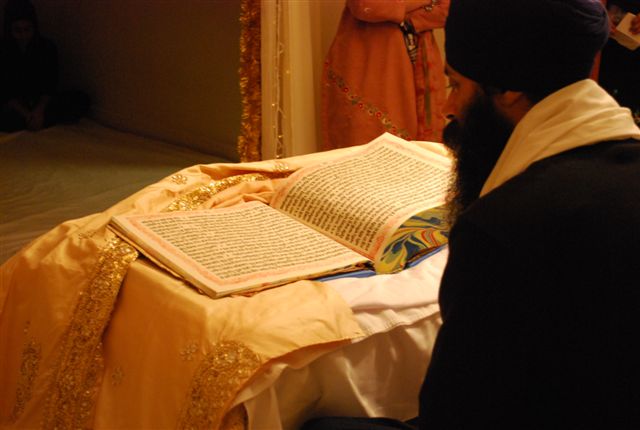 A few weeks back, an article called Outsourcing Prayers [scroll to the bottom], by Khushwant Singh caught my attention. It discussed how people pay big money to religious institutions abroad to carry out services and prayers on their behalf. This “outsourcing” of prayer helps out the “well-to-do” Americans and Europeans who do not have time for worship, while also benefiting cash-starved churches and the local economy of these remote areas. Several religions were mentioned in this article and Sikhs were not spared:
A few weeks back, an article called Outsourcing Prayers [scroll to the bottom], by Khushwant Singh caught my attention. It discussed how people pay big money to religious institutions abroad to carry out services and prayers on their behalf. This “outsourcing” of prayer helps out the “well-to-do” Americans and Europeans who do not have time for worship, while also benefiting cash-starved churches and the local economy of these remote areas. Several religions were mentioned in this article and Sikhs were not spared:
I sought explanation from the head granthi. He told me people from India and abroad sent money for akhand paths to be followed by Guru-ka-langar as thanksgiving or wish fulfillment. I could not comprehend how prayers recited by someone else could benefit a devotee who paid for them.?
There has been much debate in our community on whether paying a professional to do an Akhand Paath on one’s behalf is contradictory to Gurmat. I also remember years ago when the SGPC was “selling” Akhand Paaths on-line. Luckily, outrage from Sikhs all over the world stopped that practice. However, this article got me thinking about Akhand Paaths, and the role it currently plays in our community.
Joint post by Mapleleaf Sikh, Sundari, Jodha, Camille, Phulkari, RP Singh, Reema
It has been 25 years and we remember.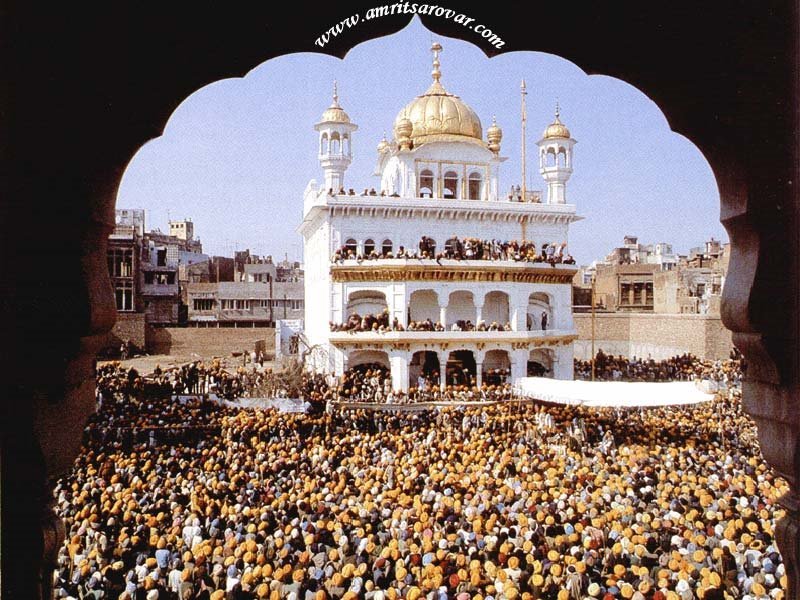
On this day we remember; in this week we remember; in this month we remember; in this year we remember. On June 6th we stopped to remember the recent chapter in the history of the Sikhs.
When the topic of 1984 is brought up, most Sikhs have one of two reactions. For many, it strikes a deep chord. It awakens a memory of what Professor Tatla calls a “critical” event, one of those rare instances that shapes lives far beyond the incident’s physical reach. It is an event that every Sikh knew, even at the time, had marked the fabric of Sikhs’ history and set off a sequence of events that would stay with us indefinitely.
For others, it involves resurrecting the tragic shadow from the past that they would much rather leave behind and forget. They say, “Let’s focus on the future.” “What’s done is done, and we must live in the present and look forward. Memories of the event only serve to create additional hatred and anger.”
We, at TheLangarHall, choose to remember.
We do not hold onto fear, anger, or hatred. We understand that time does not stop. Guru Gobind Singh Ji often spoke in the future tense. We look to the future as well.
However, to look forward, we do not need to forget the past. In Ardaas, along with Asa di Vaar that is to be done as a “community,” we share and take inspiration from Sikh sheroes and heroes.
In order to move forward with dignity, we seek justice and truth, to expose the events of 1984 and state-terrorism in the subsequent decade. We criticize and scrutinize our own roles and failings so that we may learn a lesson from this chapter of our history. We celebrate and decide our own heroes and sheroes, without seeking approval from anyone else.
This is our history. This is our truth. It must be recorded. Atonements and reparations must be made. We will write our own history, unlike many Sikhs in the past. We hold pens and no longer are forced to live in the Lakhi Jungle. We will not let others write our history. It is our history; it is about us, by us, and our perspectives will be heard.
[For background information on events leading up to Operation Bluestar, see chronology and resources on Ensaaf‘s site.]
Below, we share with you, why each of us individually remembers.
 Many eons ago, my friend Mewa Singh wrote:
Many eons ago, my friend Mewa Singh wrote:
Most Sikh organizations’ backbone tend to be its Kaurs.[link]
[As a side note, kaptaan, where did you go?] I definitely second that thought. A common lament that I often hear from some Sikh men is that somehow Sikh women are somehow lacking in terms of their commitment to the faith. I do not subscribe to this theory, and would actually refute it by Mewa Singh’s observation quoted above. By far the majority of the activists that I have ever encountered have all been Kaurs, despite the often blind Sikh organizations. The banal complaints of some Sikh men, for me, are just that – banal complaints.
Still, as an agent of change within the community, I believe a glance at the structural problems within our religious community is warranted. A recent spate of articles has made me wish to visit the issue of female Granthis
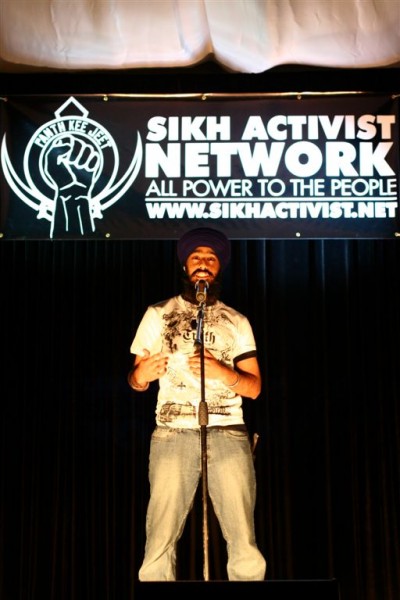
It is often said that a revolution begins not with the sword but with the pen. However, last Friday night in a packed banquet hall in the Toronto suburb of Malton, I witnessed a revolution begin with the microphone.
At an event entitled “When Lions Roar”, fantastically organized by the Sikh Activist Network, one young artist after another got on to the mike and paid homage to the lives destroyed in 1984. I was blown away by the talent and passion displayed by the performers. Through the art of spoken word, music, and action, each of the 26 acts put a different face on the impact of June 1984. They were all unique in their perspective, but all shared one common thread: 1984 is just too important to forget.
Over 1000 people gathered to attend the 4+ hour event. They covered the entire spectrum of Sikh life. This was not your typical retreat and kirtan crowd. In fact, the diversity of performers and audience has challenged me to rethink my stereotypes about who cares about 1984 and the future of the Sikh panth. Individuals that I would have never suspected of having even a passing interest in Sikhi or the Sikh community, would come up to the mike and speak with such energy, insight and emotion. They often reduced me to tears. And most amazing was the fact that almost all of them weren’t even alive in June 1984.
For a thirty-something guy like me who has always considered myself part of the “youth”, it was indeed a little bit humbling to realize that, while I’d probably still be the youngest guy at a Youth Akali Dal meeting, I’m now probably a generation or two above the youngest Sikh leaders. Which means me and my fellow Generation X-ers need to spend less time trying to do it all ourselves, and more time using our resources to enable the next wave of younger Sikhs to establish their own voice and institutions. We were the first generation coming through the diaspora, with little support from our elders. However, we can make it easier on our younger brothers and sisters. We can provide them seed funding to start their dreams, connect them those that can help them along the path, and help coach them through their challenges.
As you’ll see from the videos and photos, the next generation has indeed stepped up, their language of change is hip-hop and I think they’re gonna be alright.
Click through for videos and pictures.
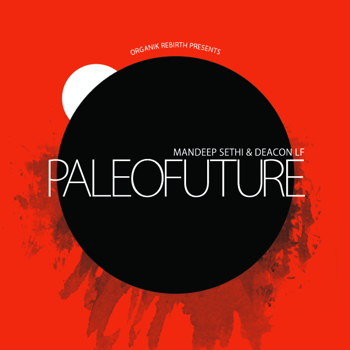 I know I have been posting about it much lately, but as full disclosure compels, I have helped with the organization in the past. A few weeks ago I posted about this weekend When Lions Roar in Toronto and Vancouver. It seems in the wake we have something in the making in Central California, Fresno. For regular readers of The Langar Hall, you’ve been introduced to the talents and music of Sikh Knowledge, Humble the Poet, GNE’s Saint Soulja, and even Mandeep Sethi. As a side note, Mandeep has the most amazing track I have ever heard by a hip-hop artist on 1984. Make sure to check it out.
I know I have been posting about it much lately, but as full disclosure compels, I have helped with the organization in the past. A few weeks ago I posted about this weekend When Lions Roar in Toronto and Vancouver. It seems in the wake we have something in the making in Central California, Fresno. For regular readers of The Langar Hall, you’ve been introduced to the talents and music of Sikh Knowledge, Humble the Poet, GNE’s Saint Soulja, and even Mandeep Sethi. As a side note, Mandeep has the most amazing track I have ever heard by a hip-hop artist on 1984. Make sure to check it out.
This month they will all be attending, participating, and performing at the Jakara Movement’s annual conference. With few seats left and this major addition, you will not want to miss this year’s conference as we come together to “Remember 1984.” The dates are June 18-21, 2009. Register TODAY to avoid a late fee. See you in Fresno.
This week I came across a couple of interesting stories out of the UK about how 1984 has since affected Sikhs. BBC Asian Network is currently previewing a radio documentary, hosted by Pops from Tigerstyle, discussing the impact Operation Bluestar has had on British Sikhs. The documentary discusses what impact, if any, 1984 has had on the Sikh conscience and the political activism that emerged. During that year, weekly covers of Des Pardes portrayed pictures of dead Sikhs – images that have stayed with many of us over the years. There existed a sense of hopelessness many Sikhs felt after only reading about and hearing of what was happening in Punjab. As one young Sikh woman states, “a record number of people took Amrit in that year”.
Before 1984 there were fears within the British Sikh community that young Sikhs, in particular, were assimilating into British way of life. A the time what Bluestar did was galvanize the community. .. and generally Sikhs were put on the spot by Operation Bluestar globally and in 1984, in the immediate aftermath, there was a great reassertion of Sikh identity – the visual representation of Sikh identity.
In a Guardian article yesterday, Sunny Hundal discusses how Operation Bluestar and the subsequent events have impacted Sikhs since.
Almost every year groups gather in London to commemorate these events and raise awareness of people still missing or locked up. Sometimes, the Indian flag is torched. In one report produced for the anniversary, the whole episode it is described as the “Sikhs’ Kristallnacht”. But while these facts are well documented and constantly discussed, there is less acknowledgement of how the episode has affected Sikhs since. [link]
He goes on to highlight three ways 1984 is still impacting Sikhs,
In remembrance of the 25th anniversary of the Darbar Sahib attack, I’m re-posting a piece I had written for sikhchic.com‘s “1984 & I” series:
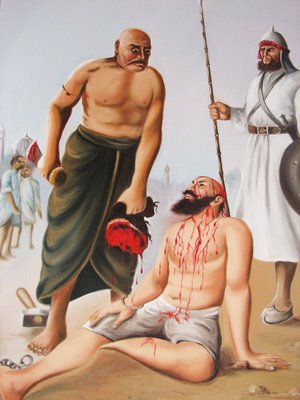
This Is Who We Are
Years ago, I was giving a local church group a tour of our Gurdwara. While I was showing them around the langar hall and explaining the history and significance of langar, I noticed that I was losing my audience. It took me a second to figure it out, but it appeared they were fixated on one of the images on the wall. It was the painting we’ve all seen of Bhai TaruSingh being scalped and blood running down his body. I’m not sure what shocked them more – the graphic painting itself, or the five-year-old boy sitting beneath it, quietly eating his meal.
For just a second, I put myself in their shoes. I looked around the room and saw pictures of Sikh martyrs from the 18th century – a man being boiled alive, a person being sawed in half, two little boys being bricked alive, and an old man with his fingers getting chopped off. And I thought to myself…is this really necessary, the depiction of these scenes in these surroundings?
I started to wonder: are these images really what we want to convey to our visitors? Shouldn’t we find something that depicts universality and love for humanity? Especially after 9/11, shouldn’t we be displaying a softer image of Sikhs? After all, this dining area is a place for us to share a common meal, and little children play down here, for God’s sake! Is this really appropriate?
But then it dawned on me …
This is who we are.
Over at Huffington Post, a lovely reflection on “The Cancer of Religious Narcissism” appeared recently. It’s point of orientation was the violence amongst Austrian Sikhs. The focus however, was on how religious narcissism is often the cause of such religious violence- when the slightest doctrinal difference leads to bloodshed… not only amongst Sikhs, but also amongst other faith communities. For example, in 2008, Greek and Armenian priests and worshippers exchanged blows at one of Christianity’s holiest shrines.
Catholics all over Europe have killed Protestants by the thousands and slaughtered their children, and Protestants have done the same. The Crusaders mounted genocidal attacks on Arabs and Jews. Modern efforts to win over moderates in Afghanistan are consistently sabotaged by fundamentalist military chaplains who tell our troops they’re fighting Satan and should be murdering anyone they can’t convert.
Precisely what the Imams are telling the Taliban. For homicidal proclivities seem endemic to most of the world’s major religions. Hindus and Muslims slaughter each other, as do Israelis and Palestinians, Sunnis and Shiites. And the Bible is filled with genocide, supposedly ordered by God. Why is this so?
The author’s’ answer: most organized religions are based on systems of belief. And we all want to believe our own tales are fact.
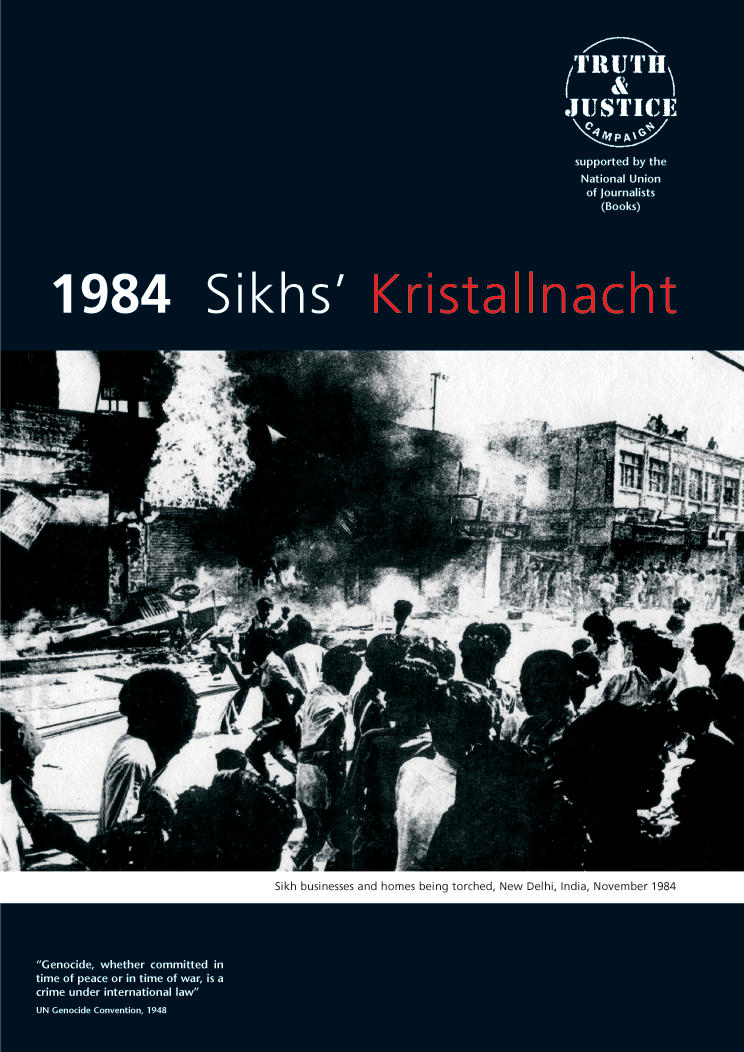 As we like to keep our readers updated, I wanted to let you know about some current events that you shouldn’t miss as well as some programs and resources that you can do with your own family and friends in your hometown.
As we like to keep our readers updated, I wanted to let you know about some current events that you shouldn’t miss as well as some programs and resources that you can do with your own family and friends in your hometown.
- The Jakara Movement conference: “Remember 1984: Reflect. Respond. React.” With limited days remaining, register BEFORE THURSDAY (June 4th, 2009) to avoid the late fee. I have written about it in the past. You won’t want to miss it.
- Last week, I wrote about the “Sukhmani Sahib for the Shaheeds” project. You can participate in your hometown by arranging a Sukhmani Sahib this weekend. Be part of a national group and download the packet from here. The packet contains, instructions, other upcoming events, and a special Benti to be read during the Ardas. Even if you can’t make it to Fresno for the conference, honor the memory of our Shaheeds through Sukhmani Sahib.
- Finally Sikh organizations have come together to off for free the Sikhs’ Kristallnacht booklet to educate Sikhs and non-Sikhs alike:
Guest Blogged by Mewa Singh
No, I didn’t actually grow up with Inderjit Bains, but by the end of the post, you’ll get it.
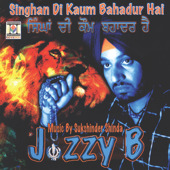 For those that have been following the North American bhangra scene, since its inception (remember, DJ Sunshine, DJ Guru, – I never liked DJ Jiten’s Hindi remixes – and, yes, even DJ Russell Peters), then the name Inderjit Bains needs no introduction.
For those that have been following the North American bhangra scene, since its inception (remember, DJ Sunshine, DJ Guru, – I never liked DJ Jiten’s Hindi remixes – and, yes, even DJ Russell Peters), then the name Inderjit Bains needs no introduction.
In North America, bhangra started with remix DJs in Toronto, but it took Inderjit Singh Bains to help change the scene. It was he, as a pioneer, that helped launch North America’s first true bhangra star – Jazzy B (although at the time, few of us would ever admit to it and spent most of our days hating on Jazzy’s various haircuts on bootleg tape covers).
The trajectory of North American bhangra, influenced in the early 1990s with the explosion of Westcoast gangster rap and especially G-funk, reshaped the global bhangra scene. While UK artists like Apache Indian and Bally Sagoo were doing their own type of hybridity with reggae and bhangra, Inderjit Bains was successful in bridging a ‘folk sound’ with hip-hop influenced bhangra beats. He found a formula. After the success of Jazzy B, he helped launch the career of Central California’s Bhinda Jatt (Bhinda took the early 90s gangster image, much further than Jazzy did, during that time), Madan Maddi and even Sukhshinder Shinda.
My fellow langa(w)r-iter wrote about his latest project – working with a kindred social activist spirit in the artist Taranampreet on her song “Teri Meri Bas: Sat Sri Akal”. While the focus on that post was on the role play women play men’s upkeep of the Sikh appearance (will we ever get a song on the role men play on the women’s upkeep of the Sikh appearance?), I want to take a bit of a different angle.
The recent caste-based violence in a Vienna and Punjab has shown us the horrible consequences of casteism. Sathnam Sanghera recently did a short report, “Caste Matters”, which investigates the possibility of legally outlawing caste-based discrimination in the UK.
Often we think caste-based discrimination is a 1st generation issue that becomes diluted in the Diaspora. However, CasteWatchUK has anecdotal evidence to show otherwise. They have lobbied to include caste-based discrimination as part of a stream-lined single equality act that would go into effect in 2010. If the group provided research evidence that caste-based discrimination existed in areas managed by the government, such as jobs and social services, then caste would be added to the equality act along with race, religion, and sexual orientation. However, this evidence has yet to be provided, aside from anecdotal examples from the work-place. The lack of aggregate evidence is only due to a lack of investigative research, as the anecdotal cases prove that it is indeed occurring.
You can listen the BBC Asian Network Report here.
Let’s us know what you think. Do you think caste-based discrimination should be included in equality acts in the Diaspora, such as the UK, USA, and Canada? If so, why?
 Last year we discussed Satnam Sanghera’s memoir, If You Don’t Know Me By Now: A Memoir of Love, Secrets and Lies in Wolverhamptom, and dialogued around the issue of mental health in the Punjabi Sikh community. The memoir was recently awarded the Mind Book of the Year Award for its literary contributions to raising awareness around issues of mental distress. The Boy with the Topknot, as it is now known, was picked from 110 entries by Mind, a non-profit organization in the UK committed to creating a “better life for everyone with experience of mental distress”.
Last year we discussed Satnam Sanghera’s memoir, If You Don’t Know Me By Now: A Memoir of Love, Secrets and Lies in Wolverhamptom, and dialogued around the issue of mental health in the Punjabi Sikh community. The memoir was recently awarded the Mind Book of the Year Award for its literary contributions to raising awareness around issues of mental distress. The Boy with the Topknot, as it is now known, was picked from 110 entries by Mind, a non-profit organization in the UK committed to creating a “better life for everyone with experience of mental distress”.
On winning the award last night, Sathnam Sanghera said:”It was such a strong shortlist, and this award is judged by some of the greatest authors in the UK, so this is a real privilege. There are hardly any books about Asian communities’ experiences of mental health problems, so I hope people read this book and it leads to more understanding.” [link]
I would highly recommend this book as I found the story to be sincere and enlightening. However, I would add that while it is important to provide this type of insight to the English-speaking literary community, it is just as (or perhaps even more so) important to ensure this type of literature is accessible to the Punjabi-speaking community. Perhaps we can strive to have these types of memoirs translated into Punjabi or made available via audiorecordings?
June soon approaches and many in the Sikh community will take the time to remember the events beginning in 1984. While some traditional sites of remembrance, mainly Gurdwaras, will continue to fulfill their duties to celebrate those that gave their lives and remember those families devastated by the Indian state’s violence, especially encouraging are new Sikh youth initiatives. Last week I discussed the Jakara Movement Sikh Conference and even the initiative “Sukhmani Sahib for the Shaheeds.” Now in Canada, the Sikh Activists Network is hosting two tremendous events.
The Details:
When Lions Roar: A Night of Music, Poetry, and Performance
Remembering the Sikh Genocide of 1984Toronto: Friday June 5th, Crown Banquet Hall (Malton), 6pm
Vancouver: Friday July 3rd, Rhizome Café (Vancouver), 6pmAdmission is FREE, but give a donation so that they can continue this initiative

